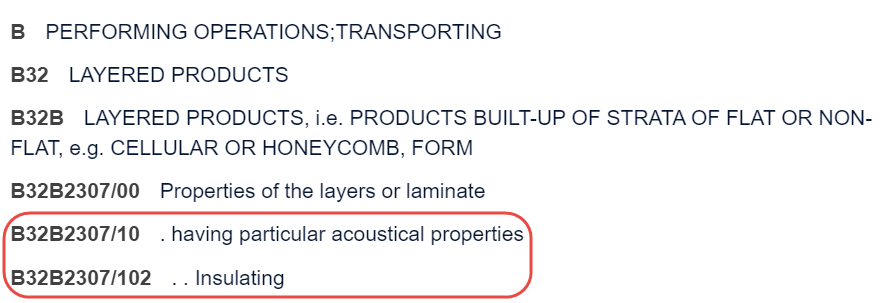4 Mistakes I See Customers Making With Their Patent Searches Featured

I’ve worked with Patsnap customers for over 9 years now, and in that time I’ve seen some wonderful, talented and intelligent people make some fundamental errors with their searching, and I thought I’d take the time here to tell you about the most common types of searching sins I see people committing. Have a look, and let me know in the comments below if you’ve seen these too, or if I’ve missed something from this list.
Hopefully, we can all learn something!
1. Get out of your own head.
There are hundreds of thousands of people filing patents every year. The chance they could be using different language than you is massive. The name you have for a tool, for a chemical, for a process is unlikely to be the name for everyone.

What are those?
Just like how people in my home country (England) call them trainers, our friends across the pond say sneakers. Now extrapolate that out to the millions of technologies, and you’ll find that not only cultural differences can influence the way you describe your technology.
Differences in industry (CBD can mean Cannabinoids to pharma people whereas CBD means “Constant Beamwidth Transducer” to our friends in the acoustics industries) and spelling (sulfur in the states is sulpher in the UK) can greatly affect the relevance of your search results. So my advice is: Get out of your own head, and try not to assume someone else doesn’t have a different name for the thing you’re describing in your search. By the way, our Keyword Helper can…assist with this.
If on the odd chance you do see someone describing a technology in exactly the same way you envision it, then you’ve either found your soulmate, or your next target for an invalidity search!
2. Think like a fisherman!
This is a bit of a reiteration of the first point, but I’ve seen many people miss search results because they spend a long old time constructing their search, generating some boolean behemoth from the get-go, and find a minimal set of patents coming back. In those situations, who knows what they might have missed if they hadn’t taken a little more time, and cast a wider net.
It’s much better to find results you don’t want, than to miss results you DO want. My advice is to widen your parameters and allow for the idea that there are some things you might not want back in your search. PatSnap has some wonderful refinement options to narrow down at a later point.

This image is relevant I promise
I worked with a customer a few years ago who was looking to create insulation that could help shield the sound of an airplane engine from the passengers inside the plane. The basis of our search looked something like this:
(airplane OR aeroplane OR aircraft) AND ( “sound emission” OR audio OR acoustic OR noise) AND (shield OR insulate OR dampen OR quieten)
Can you spot what was wrong with this? If you said “Jarrod, this is needlessly refining the search down to the aerospace industry when there might already be a relevant application of noise dampening technology in a different technology space, and by adding said refinement, you might miss some super relevant results” then you’d be right on the money.
In this particular situation, the customer and I spent a good while looking for anything that was suitable, only to realise with 10 minutes left of our call that we had potentially missed a boat (or plane) load of results. So my advice here is be aware of what you’re refining down. Is it absolutely necessary? Are you missing results by being too particular? Think like a fisherman and cast your net wide, and tighten it later!
3. Classifications are your friends <3
Classifications can be a bit scary to the novice searcher (and even some not-so-novice searchers), but they don’t need to be. Think of classifications like a library code: They start broad, and then get more specific the more letters and numbers you add on. Without codes, or categories, or sections, your local library would be a mess. Patents work the same. WIPO and other organisations apply codes to patents to make them easier to find. Here’s a great article on how they work.
My advice: Try them out! Classifications can help either broaden your search when you’re not confident about your keywords:

Or they can help refine your search when you’re getting irrelevant patents in your search results. You'd be surprised at how specific and relevant they can be:

Add that into a search, and voila, we have 10% of the results we did before, but they're super relevant:

Patsnap has also developed our own classifications, Technology Topics and Application Domains. They’re built to be easier to understand, and more relevant than the traditional classification systems. You can always get a sense of what the right ones to use are by taking a look at a patent you’re familiar with and seeing what classifications are applied (a bit like a bloodhound getting a scent!).
4. Many ways to search
Everything we’ve spoken about so far is to do with the old school way of constructing a nice boolean search. It’s seen by many to be a robust, reliable, and effective way of getting good search results. But we’re in the 2020’s! The advent of AI, big data, and useability has come, and I think you’d be silly to neglect the other methods of searching. To get back to my net analogy, it’s not only good to cast a wide net, but to use different types of net too.
Patsnap has a range of different searching tools that can get you to relevant results in ways other than a constructed search. Our Semantic Search is great at taking a chunk of text and finding relevant results from it. I’ve spoken with numerous customers who have found this to be a great way of finding those fringe couple of results (and avoiding some expensive litigation) that they weren’t able to bring back with traditional boolean searching. Some other of the many ways to find relevant data include Eureka AI, PatSnap Chemical and PatSnap Bio amongst others.
Comments
1 comment
I’ve given you my very opinionated perspective on what I see people doing wrong with their searches, but I’m curious: What mistakes have you seen people make with searches? What would be your main advice for someone getting to grips with finding relevant patents? Post your thoughts below! 😊
Please sign in to leave a comment.